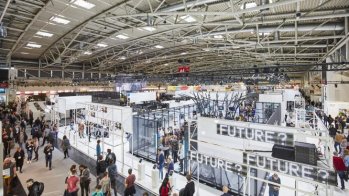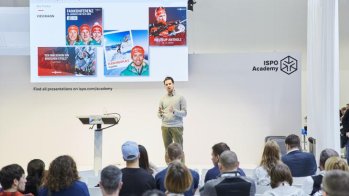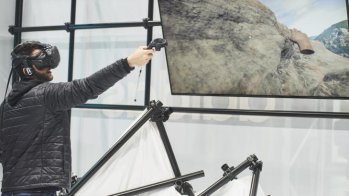
Robert Scoble has been studying new customers and companies for decades, and was first or very early to see Uber, Tesla, Instagram, DJI, Siri, Flipboard, amongst others, and will bring that learning to the ISPO Digitize Summit on June 28th and 29th in Munich.
In his keynote What is the customer in 2020 and how do we prepare for it Scoble will explain how customers are reacting to virtualized interfaces, artificial intelligence, new social media capabilities, and are changing what they will expect from companies in the future.
ISPO.com: What are the three most important learnings from digital transformation for you?
Robert Scoble: 1. AI, or really any new technology, will be met with resistance, in particular due to employment concerns. AI/automation has the potential to replace many jobs, but maybe we are looking at it wrong. Instead of looking at it as a cost reducing technology, look at it as a way to make your employees more productive and able to add more features per year to your products and services than before.
2. Many people still are resisting changes that happened to early adopting enterprises a decade ago, mobile, cloud, IoT, etc. Now those technologies are very robust and have a low cost of entry, so those who aren't using these need to take a fresh look and make sure they are setting up their companies for success in the next decade.
3. The best companies are innovating with the bleeding edge technologies. AI, voice, cryptocurrencies and blockchain, augmented reality, and are looking for ways to be ready for the massive changes that are coming over the next decade, thanks to 5G, better and lower-cost sensors, and next-generation AIs that are getting massively easier to train and utilize.
What does this mean for business?
1. Have you sanded down cultural resistance to innovation? Have you invested in it? Is it a cultural value? If you answered no to any of those then some basic top-down decisions have to be made before you can expect innovative products or ideas to bubble up from the bottom of your enterprise.
2. Have you taken a fresh look at technologies you might have passed on over the last decade? Cloud, IoT, robotics, social, and rethinking your enterprise with a mobile mindset? If not, time to reconsider now that these technologies have become far more robust and affordable.
3. Are you planning for the world of the 2020s, which will bring important new ways of doing business, from augmented reality to hyper-fast, accurate, and low-cost AIs?
What are the biggest challenges that companies face when it comes to digital transformation?
As it always is: culture. Fear. Lack of leadership. The best companies have built a culture of innovation from top to bottom. They are the ones with the best products today and most profitable ways of doing business. Tomorrow? Brings new opportunities and challenges. It starts with culture. Do you have a curious culture that quickly adopts new ideas? Or one that resists change at any cost? Or somewhere in between? Work on that and everything else will come in play.
What are the hallmarks of successful companies in the digital age? Are the structures decisive or digital-thinking employees?
The companies that bring the most innovative products to market, whether Cemex in Mexico, or Google or Tesla in Silicon Valley, have small teams that are empowered to change. And they are supported by an organizational structure that will invest in making better products and services from decisive executives who value new ways of doing things and new ideas and will invest in riskier new technologies just to make sure their companies stay relevant.
In other words, it's both. A Tesla gets great reviews because of the small things that line employees improve and big things that the corporation overall invested in.
ISPO Digitize at the ISPO Munich 2018 in pictures
How do employees develop a digital mindset?
I've been asking geeks in San Francisco a few questions to judge whether they are curious and keeping up to date. For instance, I ask "do you use the Amazon app?" Almost everyone does.
Then I ask "have you tried the camera feature there?" Very few have, and when I show what it does when you point it at people (its AI figures out what kinds of clothes they are wearing, and shows how you can buy similar clothes, or when I show what it does when pointed at brands, like Adidas or Starbucks) people are amazed. But the most innovative people already know about that feature and can tell you the pros and cons of Amazon's AI's vs. other approaches in the marketplace.
Same when I ask about drones, or self driving cars. The most innovative cultures keep up to date and put a cultural value in finding a use for similar technologies in their own companies.
I just bought a new Tesla and I see influences from other companies all over the place, particularly from Apple. Does your executive team ask "how can we become more like Tesla or Apple?"
How was the mindset at your former employer Microsoft?
When I worked at Microsoft I saw that many employees had innovative hobbies, from making drones to car clubs that would try to come up with better technology for cars. Are your executives joining in on similar efforts? Do they set a good role model? Do you take your teams to technology fairs, or other events and do "innovation treasure hunts?" Do they meet with other innovative companies and learn the managerial efforts it took to come up with those innovations?
Have your team torn apart a new technology lately, whether it's an Amazon Echo or a DJI drone?
But all those efforts will be stymied if you don't have a culture of investing in new ideas and new technologies. Have you talked with customers lately and looked for new ways to help them? AirBnb really took off after the founders went on a tour of customers and heard about how their customers were struggling with their service.
All the talk of technology often takes enterprises off of the ball: are you doing the best you can for your customers?
Is there a product that combines the digital world and the world of sports that inspires you?
I met an eye doctor in South Africa and she found a way to improve the perception systems of professional athletes. The owner of the South African cycling team told me she took his worst rider, in terms of falls per race, and after using her system for 10 minutes a day for six months, now is the best on the team. She started a company, eyegym.com, which today lets anyone improve their eyes with her system.
Another one is Stryvr. It started at Stanford University by taking a 360-degree camera out on the football practice field. They found that if they let the quarterback view his plays over and over in VR that his stats got better.
I like both of these companies because they demonstrate that humans can be made better with new technologies and not just replaced. Does your company have that philosophy? Is it looking for ways to make your customers faster, smarter, better?
You are one of the most respected masterminds when it comes to digital transformation/AR/VR. What can the audience learn from you at your ISPO Digitize Keynote?
This year I'm studying how people change. How do they become better? Even deeper, what does it mean to be human in an age of digital gods that know literally every fact and potentially even every movement of humans? I'll present an optimistic view of how the machine/human interface will enable new kinds of products and services and new ways of working alongside machines that empower us to be better at everything we do, from catching a ball to driving a car to running an enterprise.
At the ISPO Digitize Summit (June, 28th/29th) digital thinkers, well-known entrepreneurs and greats from the sports industry will speak. In advance, they told ISPO.com about their most important learnings from digitization.
 SportsTechUnlocking the Future of Sports with AI
SportsTechUnlocking the Future of Sports with AI
- ISPO awards
- Mountain sports
- Bike
- Design
- Retail
- Fitness
- Health
- ISPO Job Market
- ISPO Munich
- ISPO Shanghai
- Running
- Brands
- Sustainability
- Olympia
- OutDoor
- Promotion
- Sports Business
- ISPO Textrends
- Triathlon
- Water sports
- Winter sports
- eSports
- SportsTech
- OutDoor by ISPO
- Heroes
- Transformation
- Sport Fashion
- Urban Culture
- Challenges of a CEO
- Trade fairs
- Sports
- Find the Balance
- Product reviews
- Newsletter Exclusive Area
- Magazine




















